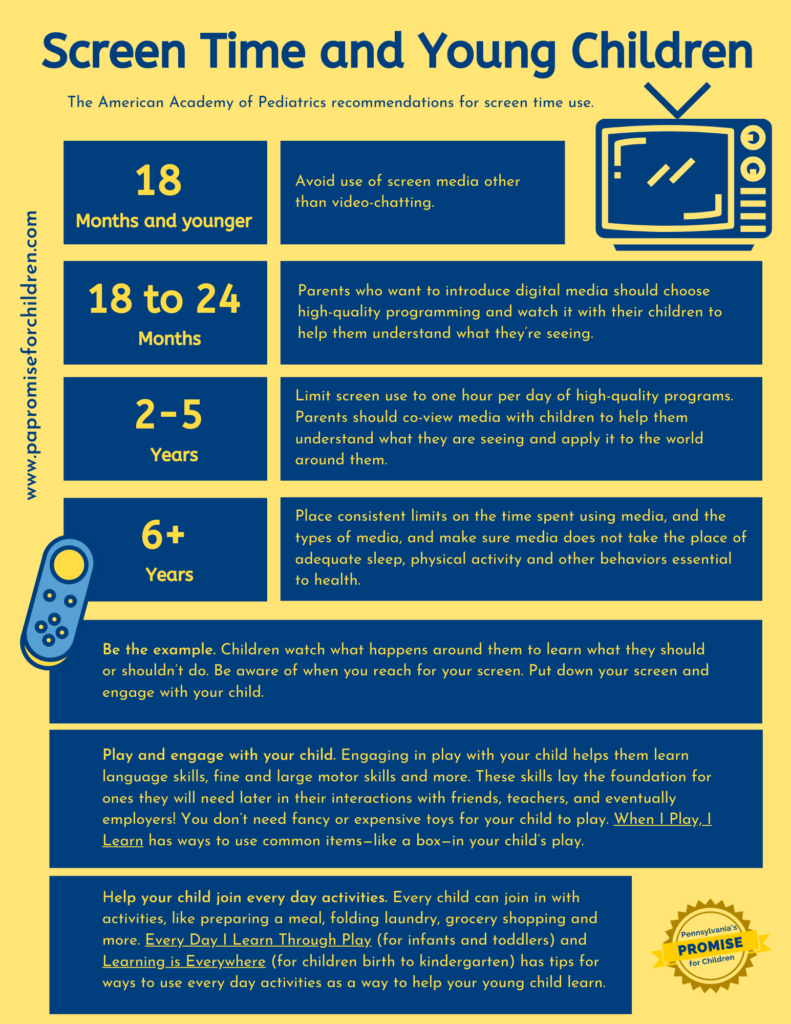Click to download and print in English and Spanish.(Prints on 8.5 x 11 inch paper.)

With so many people owning phones, tablets, or televisions, and screens in doctors’ offices, malls, and restaurants, it can be difficult—or seem impossible — to limit screen time exposure with young children.
Studies have shown that excessive screen time use in young children may have negative impacts on the brain’s white matter, a crucial area for the development of language, literacy, and cognitive skills. Additionally, excessive screen time can limit a child’s time and attention, hindering their ability to develop other essential skills necessary for healthy growth and development.
Wondering how much screen time is too much for your child? The American Academy of Pediatrics has recommendations for screen time use.
- For children younger than 18 months, avoid use of screen media other than video-chatting. Parents of children aged 18 to 24 months who want to introduce digital media should choose high-quality programming and watch it with their children to help them understand what they’re seeing.
- For children ages 2 to 5 years, limit screen use to one hour per day of high-quality programs. Parents should co-view media with children to help them understand what they are seeing and apply it to their own world.
- For children ages six and older, place consistent limits on the time spent using media, and the types of media, and make sure media does not take the place of adequate sleep, physical activity, and other behaviors essential to health.
Families who want to limit screen time use with their young child may wonder how they can help their child with other activities. Here are a few ways to help your child learn while distancing them from screens.
- Be the example. Children watch what happens around them to learn what they should or shouldn’t do. Be aware of when you reach for your screen. Put down your screen and engage with your child.
- Play and engage with your child. Engaging in play with your child helps them develop language skills, fine and gross motor skills, and more. These skills lay the foundation for the ones they will need later in their interactions with friends, teachers, and eventually employers! You don’t need fancy or expensive toys for your child to play. When I Play, I Learn has ways to use everyday items—like a box—in your child’s play.
- Help your child join everyday activities. Every child can participate in activities such as preparing a meal, folding laundry, grocery shopping, and more. Every Day I Learn Through Play (for infants and toddlers) and Learning is Everywhere (for children birth to kindergarten) offer tips on how to incorporate everyday activities into learning experiences for your young child.
